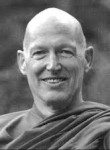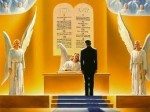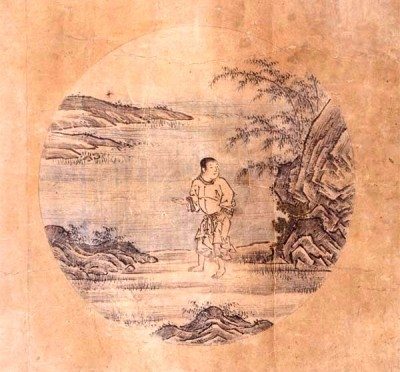Sakkaya ditthi, the wrong view of self, is the first of the ten fetters that bind unenlightened beings. Its counterpart or antidote is Right View or Right Understanding, the first fold of the Eightfold Path. Until we arrive at samma ditthi, the correct view of self, it’s hard to loosen the other nine fetters. Who practices… Continue reading Zen Practice And Sakkaya Ditthi
Category: Zen Practice
Zen Emptiness Is Fullness
“All sentient beings” includes ourselves but “no sufferer is found, no doer of the deeds is there.” No person enters Nirvana and the path has no traveler. So who suffers, who does deeds, who enters Nirvana and who travels the path? Who finds the answer to these questions? When the Buddha announced the doctrine of… Continue reading Zen Emptiness Is Fullness
Zen Practice And Judgement
The famous Bible (Matthew) verse: “Judge not that ye be not judged” has two (2) meanings, I think. The obvious, mundane meaning is that the law of karma (the law of cause and effect) will operate and we will be judged by others if we first judge them. The second, deeper meaning is that the very… Continue reading Zen Practice And Judgement
Empty the cup, Practice Zen
A learned professor once sought out Japanese Zen master Nan-In. He told the master that he was well-read on Zen matters and did not need introductory lessons. He just wanted advanced instruction as to what should be done to attain enlightenment. The master offered the visitor a cup of tea and began pouring tea… Continue reading Empty the cup, Practice Zen
The Zen Bell Tolls For No One
If there is no independent self, what is there? Buddhism teaches that nothing exists independently of anything else. Everything we see, hear, smell, taste or touch is connected to something else. Nothing exists in a vacuum. John Donne’s Meditation XVII, published in 1624, includes the passage made famous by Ernest Hemmingway: No man is an… Continue reading The Zen Bell Tolls For No One
Zen Practice And Enlightenment
The Ten Ox-Herding Pictures provide a framework for the How To Practice Zen program. Although they were not intended by their artist to be used as a guide, they provide a good outline for building an authentic, daily Zen practice. The pictures appeared in the twelfth century. They were based on The Sutra of the Ten… Continue reading Zen Practice And Enlightenment
Why do we practice Zen?
Modern Zen practitioners usually sit on mats and cushions indoors but we practice outdoors whenever it’s reasonable to do so. Even the Buddha eventually established monasteries where people could sit indoors. The purpose of sitting in meditation is not to see how much hardship a person can endure. We don’t sit because we believe that… Continue reading Why do we practice Zen?
Zen And No Two Things
A man wrote a letter to the editor of The St. Petersburg Times in the spring of 2009, saying that he wanted oil companies to drill for oil in the Gulf of Mexico off the west coast of Florida “because we need a victory over the all-powerful environmentalists.” That was about a year before the… Continue reading Zen And No Two Things
The Zen bunny that cooked itself
The story about the rabbit that cooked itself indicates that the rabbit was already enlightened when it did its famous (among those of us who read Jataka stories) deed. Although the term “Zen” is usually translated as “meditation,” the actual practice of sitting meditation is just part of Zen practice. Zen meditation is not the same thing… Continue reading The Zen bunny that cooked itself
Zen, the Sniper and Jesus
In the spring of 2009, I saw a pickup truck with “My boss is a Jewish carpenter” on one bumper and “This vehicle will be unoccupied in case of Rapture” on the other. Centered on the glass behind the passenger compartment was the Eagle, Globe, and Anchor (the logo of the Marines), under which appeared… Continue reading Zen, the Sniper and Jesus









